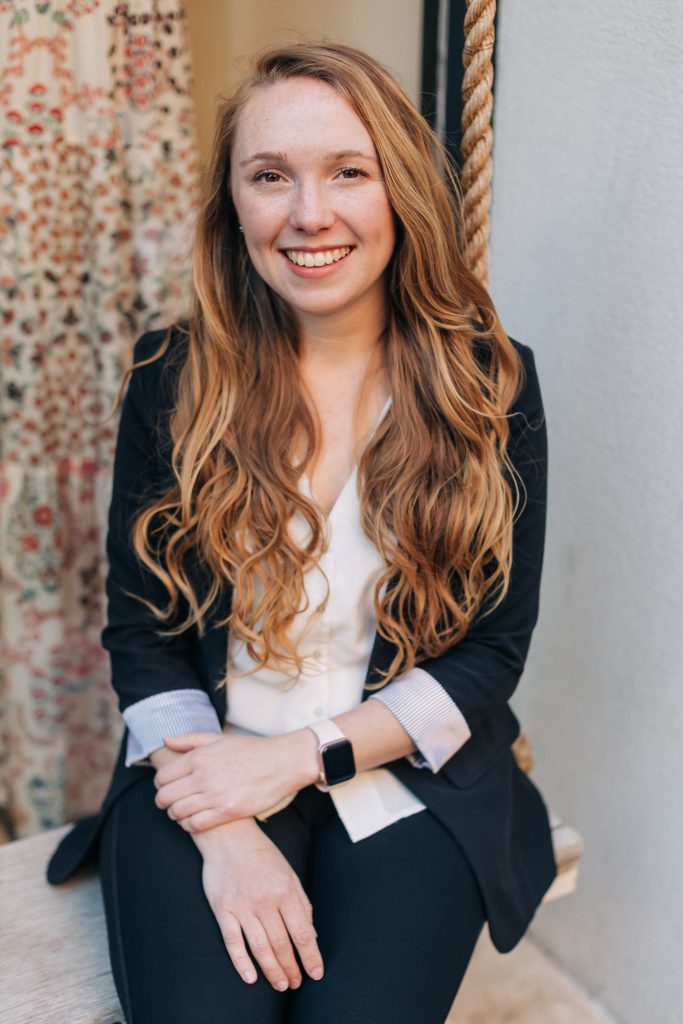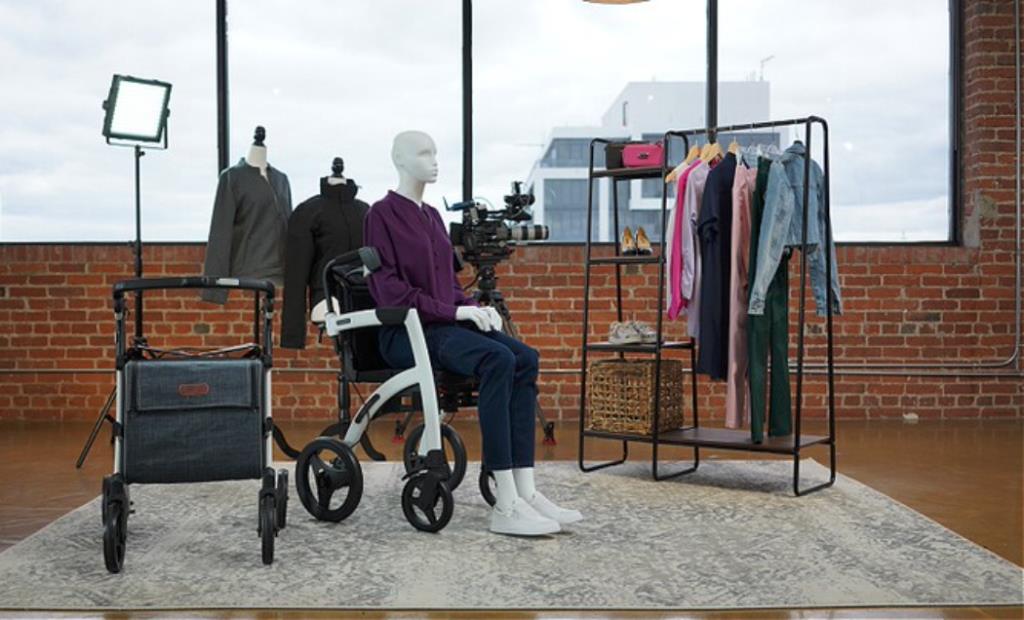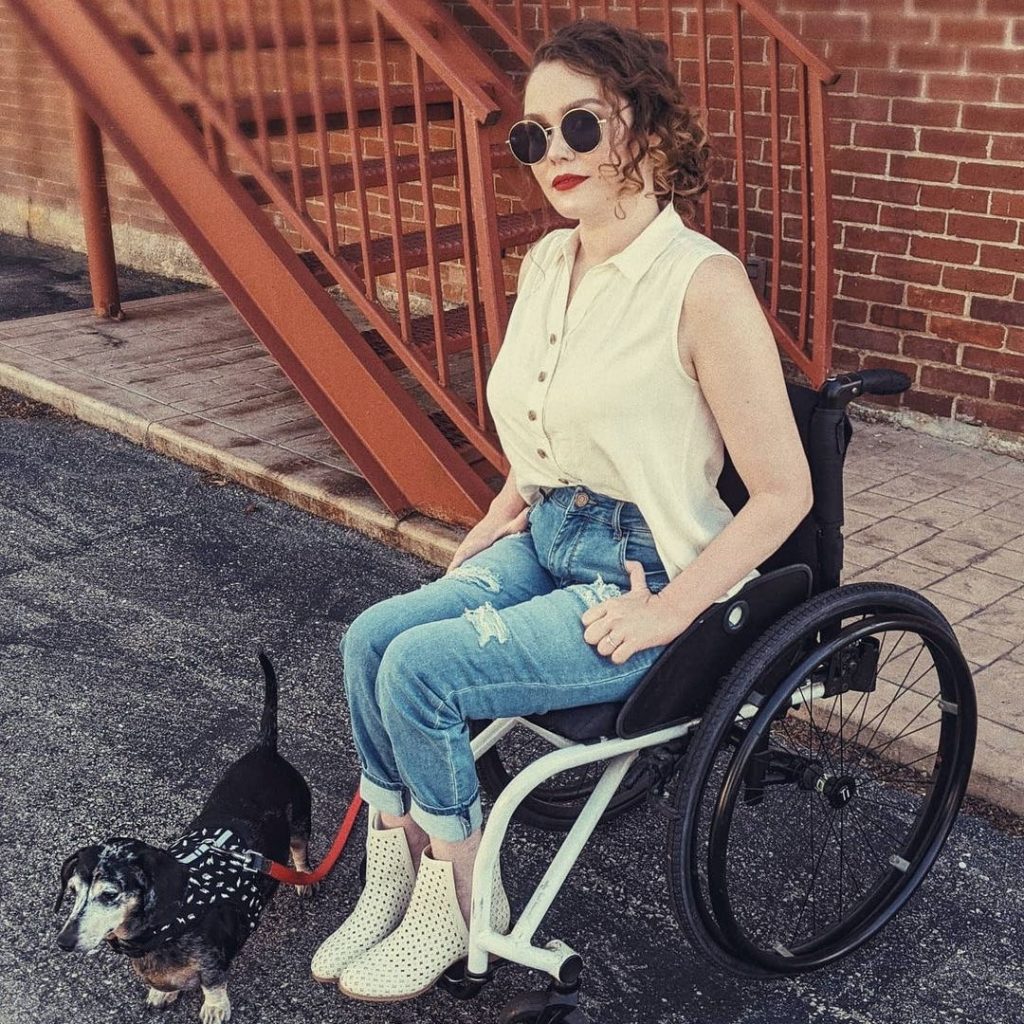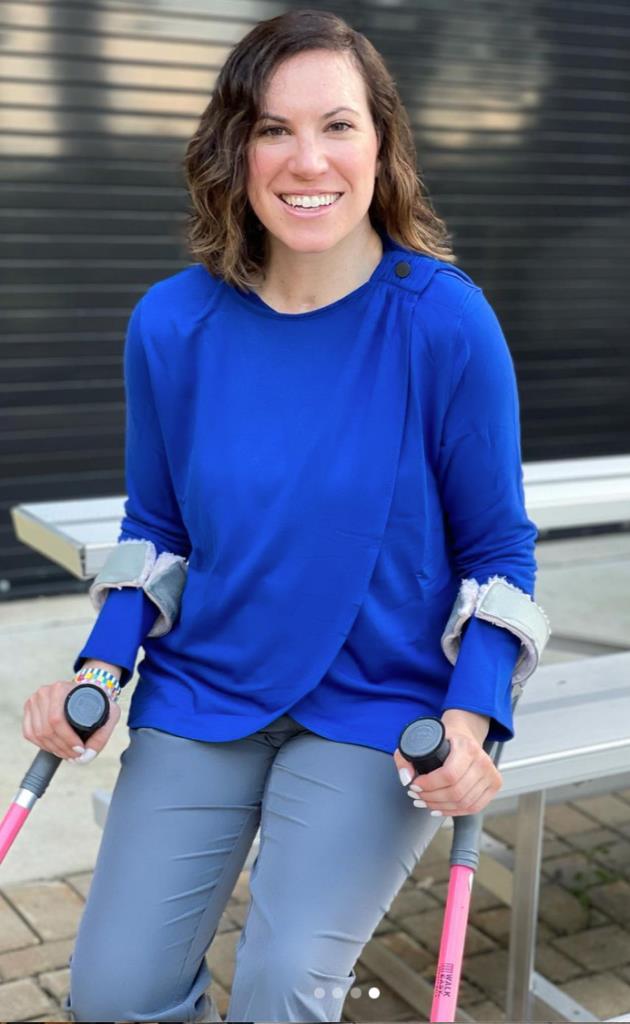University of Fashion launches their 5-part Adaptive Fashion Series taught by Tracy Vollbrecht of Vollbrecht Adaptive Consulting (Photo courtesy: University of Fashion)
Did you know that there are more clothing options available for dogs than there are for people with disabilities? It took a long time coming, but the fashion industry is finally addressing the needs of the disability community, which is known today as Adaptive Fashion.
Thanks to our expert Tracy Vollbrecht, the University of Fashion is launching its 5-part Adaptive Fashion series to help educate the industry in the Adaptive Fashion marketplace. Our new series covers: the history adaptive fashion, how to design & develop adaptive fashion and how to merchandise and market product for the adaptive fashion consumer.

Tracy Vollbrecht of Vollbrecht Adaptive Consulting and University of Fashion instructor (Image courtesy: Vollbrecht Adaptive Consulting)
Our series begins with the terminology used when referring to various types of disabilities. Ms. Vollbrecht also offers a downloadable Terms and Definitions document to help understand appropriate language and terms used is this specialized market segment.

Adaptive fashion designed by Tracy Vollbrecht for Yarrow featured on the Canadian TV show Fashion Dis (Image courtesy: Tracy Vollbrecht)
Ms. Vollbrecht’s history of the adaptive market covers such innovators as Helen Cookman, who in 1955, began researching the market potential of adaptable clothing at New York University’s Institute of Physical Medicine and Rehabilitation after being recommended for the role by New York Times style editor Virginia Pope. Cookman would spend the next four years developing a collection called Functional Fashions, which was a collection of 17 items designed to help disabled people dress independently. However, Ms. Vollbrecht explains that upon the passing of Helen Cookman and Virginia Pope the functional fashion movement began to fade and was replaced with clothing intended to make dressing easier for the elderly. It wouldn’t be until 2004-2007 that The Adaptive Fashion Showroom and the company Wheeliechix-Chic, founded by Louisa Summerfield, came into being and would take adaptive fashion to the next level.

Monica Engle Thomas wearing a white Yarrow sleeveless button down designed by Tracy Vollbrecht (Image courtesy: Yarrow)
Tracy Vollbrecht Interview
UoF founder Francesc Sterlacci sat down with Tracy Vollbrecht to learn why she became interested in designing for the adaptive market and her thoughts on where the market is headed.
Francesca: Were you formally trained as a fashion designer and if so, where? What motivated you to pursue a career in adaptive fashion?
Tracy: I am! I graduated from Kent State University with a Bachelor of Fine Arts in Fashion Design. At Kent, I had the opportunity to conduct research on adaptive fashion, which was still in its second-wave infancy. I say second-wave as there was a first wave of adaptive fashion in the 60s (check out the history of adaptive fashion lesson to learn more!). Within the research I conducted, I spoke to over 75 people with varying disabilities to learn about their challenges with clothing. My research culminated in a universally designed collection shown at Kent’s annual fashion show, a published research paper, and presenting my research at various conferences, including the International Textile and Apparel Association’s annual conference. The work I did at Kent showed me that clothing challenges weren’t just an issue my dad, who had MS, had experienced, but an issue that so many people face. This motivates me every day to continue the work I do – clothing should allow everyone to express themselves and feel good, not just some of us.
Francesca: How in demand are designers with adaptive fashion expertise? How did you connect with the companies that you have designed for in this space?
Tracy: Unfortunately, adaptive fashion is still very much a niche portion of the fashion industry, which is what myself and others are working to change. There isn’t a high demand for adaptive fashion designers yet. I’m hopeful that the niche will grow and there will be more demand for designers, merchandisers, buyers, marketers, etc with adaptive fashion experience. The companies I’ve worked with have either sought me out, were referred to me, or that I connected with them through network connections.
Francesca: Can you name the companies that you have designed for and/or who you are currently working for? Are their dedicated online and brick & mortar stores exclusively selling adaptive fashion?
Tracy: My first adaptive fashion role was with Juniper Unlimited where I designed and helped launch their brands’ Yarrow and ULEX. In my consulting work with Vollbrecht Adaptive Consulting, I’ve developed training resources for Target, taught lectures at IFA Paris, conducted research for Open Style Lab, and more. I can’t share who I’m working with at the moment, but I am definitely excited for what’s to come! At this stage, adaptive fashion is almost exclusively online. As we talk about in our merchandising lesson, online shopping has both pros and cons for the Disabled consumer. It’ll be great to see brands start to carry adaptive products in store, where the shopper can find them organically.
Francesca: What are the biggest challenges in designing for people with physical challenges?
Tracy: The biggest challenges for creating adaptive fashion are the variety in needs and the fashion cycle. Within the disability community and even within the same disability (physical or not), there is so much variety in clothing needs, body shape, and challenges. No two disabilities are the same, which is why it’s so important for brands to work with people with disabilities. However, the time and effort needed to properly develop clothing that actually works for all is at odds with the fast-fashion, trend driven nature of the fashion industry currently.

Molly Farrell wearing a top designed by Tracy Vollbrecht from ULEX- one of the brands she helped launch (Photo courtesy: ULEX)
Francesca: Do you see the adaptive market growing since companies like Tommy Hilfiger and other big brands have become more inclusive?
Tracy: Definitely! There is so much potential for brands to tap into the unmet needs of consumers with disabilities. Just because a few brands have gotten into the space doesn’t mean there isn’t room for more brands, all brands really, to get into the market. There will be “enough” adaptive fashion when consumers with disabilities have the same amount of choice in brand, price, and style as consumers without disabilities.
Francesca: What advice do you have for our students who may be interested in designing adaptive fashion?
Tracy: My advice to any student is that adaptive fashion is more than just adaptive design. Every role within the fashion industry (merchandising, product development, buying, marketing, etc.) is needed to make sure adaptive fashion gets into the hands of the consumer. If you have an interest in adaptive fashion, pursue it! Follow Disabled creators on social media; stay up to date on what brands are doing; volunteer for fashion shows. For designers specifically, adaptive fashion is still fashion. Getting experience working for fashion brands is essential. Since the adaptive market is still growing and there aren’t many adaptive design roles, take advantage of learning the process of design and development for non-adaptive fashion as that process still applies to adaptive fashion.
To learn more about Tracy Vollbrecht:
Cell: 732-632-7071
Website: www.vollbrechtadaptiveconsulting.com
LinkedIn: www.linkedin.com/in/tracy-vollbrecht/
Company LinkedIn: www.linkedin.com/company/vollbrecht-adaptive-consulting
Learn More About the Adaptive Market
Read the book: All About Adaptive by Michele Chung
Learn how a new store in Pasadena, California caters to Adaptive Fashion consumers: Sewn Adaptive
So, tell us, how will you be pursuing a career in the Adaptive Fashion market?
-------------------------------------
By: Francesca Sterlacci
Title: UoF Launches Adaptive Fashion Series
Sourced From: www.universityoffashion.com/blog/uof-launches-adaptive-fashion-series/
Published Date: Sat, 31 May 2025 23:55:16 +0000
Read More
Did you miss our previous article...
https://edmmusic.news/fashion-clothing/bespoke-tailoring-a-lost-art
 FestivalsMusicNew ReleasesArtistsFashion & ClothingVideosPrivacy PolicyTerms And Conditions
FestivalsMusicNew ReleasesArtistsFashion & ClothingVideosPrivacy PolicyTerms And Conditions
